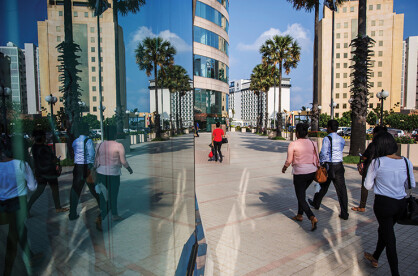Sri Lanka's escalating food crisis
The food crisis in Sri Lanka is only getting worse, with increase in food prices as high as 57 percent as of May 2022.

Source - Eranga Jayawardena
The food crisis in Sri Lanka is only getting worse, with increase in food prices as high as 57 percent as of May 2022.

Source - Eranga Jayawardena
The Sri Lankan economic downfall started taking a turn for the worst earlier this year, as prices of basic necessities started to increase. The sharp price increases only appeared to worsen with the start of frequent power cuts lasting up to 13 hours, resulting in mass protests all over Sri Lanka. According to a press release issued by the Sri Lankan central bank, the heavy increase in demand at a time when domestic supply is disrupted, as well as the overall price increase in products globally, could worsen the inflation rate.
The central bank of Sri Lanka has decided to increase the Standing Deposit Facility Rate (SDFR) and the Standing Lending Facility Rate (SLFR) of the Central Bank by 700 basis points to 13.50 per cent and 14.50 per cent as of April this year.
The overall economic downfall and food crisis faced by Sri Lanka has been developing since the Covid-19 pandemic and has only gotten worse, directly impacting the price locally; with inflation prices on food as high as 57 percent as of May 2022. An emergency appeal by the International Federation of Red Cross and Red Crescent Societies states that 2.2 million people are affected/at risk due to the economic situation in Sri Lanka.
“The emergency appeal that we have launched in support of Sri Lanka Red Cross will protect the livelihoods and safety of thousands of households in need of support.”
As a developing country with a population of over 22 million, such an increase in food prices and economic downfall has largely impacted the agriculture industry. With farmers struggling to grow crops and the citizens unable to afford the product, Sri Lanka is facing a shortage of food and many fear that they may be facing a hunger crisis in the near future. While officials in Sri Lanka continue to work to increase food production, the agriculture minister has advised farmers to begin growing more rice in order to alleviate a hunger crisis.
Farmers, on the other hand, have been struggling to produce any crops due to inaccessibility to fertilizers as well as a lack of fuel to run their machinery. Many people are now only farming crops to feed their families because it is nearly impossible to produce any crop for a living.
The food crisis is exacerbated by fuel shortages, making it difficult for people to prepare meals. With the country's poorest demographic struggling to feed themselves, nutritionally dense foods like fruits and vegetables have become a luxury for many.
According to the UN, nearly five million people in Sri Lanka require food assistance, and they have collaborated to launch a joint Human Needs and Priorities Plan (HNP) to assist close to 1.7 million of the worst-affected people by the economic crisis.
While the Chinese government has granted Sri Lanka a 500 million RMB grant, along with six batches of rice shipment scheduled to arrive in the last week of June, India has offered assistance by extending its credit line by another $200 million.
The World Food Programme Sri Lanka (WFP) also launched a voucher program on June 16th to provide food for those who are pregnant in an effort to help meet the food needs of the most vulnerable.



